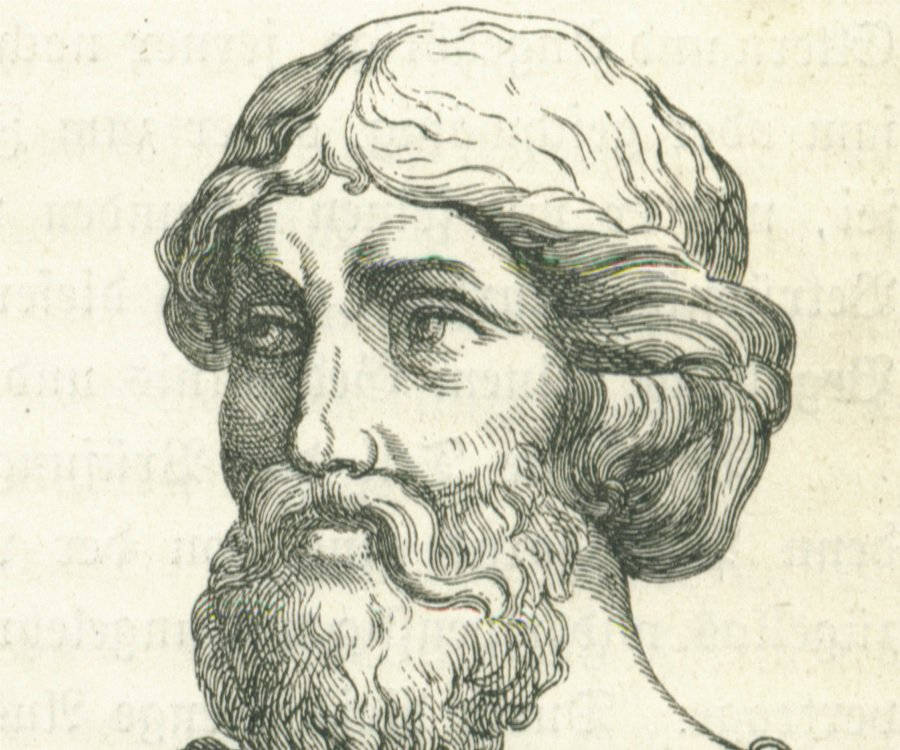Great Mathematicians NCERT wants class 9 students to know......
(consider clicking the follow button for our efforts. It is similar to subscribe in YouTube)
Pythagoras (569 BCE – 479 BCE)
The Pythagoreans in Greece, followers of the famous mathematician and philosopher Pythagoras, were the first to discover the numbers which were not rationals, around 400 BC. These numbers are called irrational numbers (irrationals), because they cannot be written in the form of a ratio of integers. There are many myths surrounding the discovery of irrational numbers by the Pythagorean, Hippacus of Croton. In all the myths, Hippacus has an unfortunate end, either for discovering that √2 is irrational or for disclosing the secret about √2 to people outside the secret Pythagorean sect!
G. Cantor (1845-1918) & R. Dedekind (1831-1916)

Archimedes (287 BCE – 212 BCE)
René Déscartes (1596 -1650)
René Déscartes, the great French mathematician of the seventeenth century, liked to lie in bed and think! One day, when resting in bed, he solved the problem of describing the position of a point in a plane. His method was a development of the older idea of latitude and longitude. In honour of Déscartes, the system used for describing the position of a point in a plane is also known as the Cartesian system.Thales (640 BCE – 546 BCE)
A Greek mathematician, Thales is credited with giving the first known proof. This proof was of the statement that a circle is bisected (i.e., cut into two equal parts) by its diameter. One of Thales’ most famous pupils was Pythagoras (572 BCE), whom you have heard about.
Euclid (325 BCE – 265 BCE)
Euclid, a teacher of mathematics at Alexandria in Egypt, by 300 BCE, collected all the known work on geometry and arranged it in his famous treatise, called ‘Elements’. He divided the ‘Elements’ into thirteen chapters, each called a book. These books influenced the whole world’s understanding of geometry for generations to come. Euclid did not require his fifth postulate to prove his first 28 theorems. Many mathematicians, including him, were convinced that the fifth postulate is actually a theorem that can be proved using just the first four postulates and other axioms. However, all attempts to prove the fifth postulate as a theorem have failed. But these efforts have led to a great achievement – the creation of several other geometries. These geometries are quite different from Euclidean geometry. They are called non-Euclidean geometries. Their creation is considered a landmark in the history of thought because till then everyone had believed that Euclid’s was the only geometry and the world itself was Euclidean. Now the geometry of the universe we live in has been shown to be a non-Euclidean geometry. In fact, it is called spherical geometry. In spherical geometry, lines are not straight. They are parts of great circles (i.e., circles obtained by the intersection of a sphere and planes passing through the centre of the sphere).
Heron (10 C.E. – 75 C.E.)
Heron was born in about 10AD possibly in Alexandriain Egypt. He worked in applied mathematics. His works on mathematical and physical subjects are so numerous and varied that he is considered to be an encyclopedic writer in these fields. His geometrical works deal largely with problems on mensuration written in three books. Book I deals with the area of squares, rectangles, triangles, trapezoids (trapezia), various other specialised quadrilaterals, the regular polygons, circles, surfaces of cylinders, cones, spheres etc. In this book, Heron has derived the famous formula for the area of a triangle in terms of its three sides









Comments
Post a Comment
Please let us know if you have any doubts or suggestions......